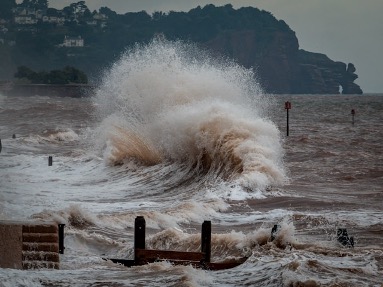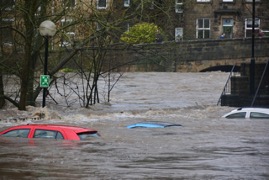
Climate change has emerged as one of the most pressing challenges of our time, affecting every aspect of our environment. While much focus has been placed on global warming and rising sea levels, another significant consequence of climate change is the increase in extreme weather events, including excessive precipitation and dramatic thermal variations. These changes are having a profound impact on ground stabilization, erosion along watercourses, overwhelmed drainage systems, and the durability of construction materials. The following article explores how these climate-driven changes are affecting our environment and infrastructure.
The Impact of Excessive Rainfall
The increased frequency and intensity of storms, coupled with rising levels of precipitation, are contributing to instability in the ground. When excessive rain falls in a short period, the soil becomes saturated, leading to a higher risk of landslides and mudslides, especially in areas with steep terrain. This instability can pose a significant threat to residential and commercial structures, transportation networks, and other critical infrastructure.
Additionally, prolonged periods of heavy rain can potentially lead to soil compaction and reduced permeability[JS1] , exacerbating runoff and increasing the risk of flooding. This is particularly concerning in urban areas with large amounts of impervious surfaces such as roads and buildings, which prevent water from naturally infiltrating the ground. As a result, excess water collects on the surface, further contributing to erosion and ground instability. However, it should be noted that this is a conditional aspect and pertains to certain types of soil compositions, not all.
Erosion Along Waterways
Climate change is causing more intense rainfall events, leading to increased flow in rivers and streams. This surge in water volume accelerates erosion along watercourses, as well as scour along bridge piers [JS2] [JS3] washing away riverbanks and destabilizing the surrounding land. As erosion progresses, it can undermine bridges, culverts, and other structures, posing significant safety risks.
In agricultural areas, erosion can lead to the loss of valuable topsoil, impacting crop yields and contributing to nutrient runoff into water bodies. This runoff can cause algal blooms and other environmental issues, further disrupting ecosystems and reducing water quality.
Overwhelmed Drainage Installations
The surge in precipitation is overwhelming existing drainage installations in many regions. Stormwater systems, designed to handle typical rainfall patterns, are struggling to manage the increased volume of water from heavy storms. This often results in urban flooding, with streets turning into rivers and basements filling with water.
Overwhelmed drainage systems can lead to severe disruptions in transportation and public services, while also posing health risks due to contaminated floodwaters. The need for infrastructure upgrades is critical to adapt to these changing weather patterns and ensure public safety.

Thermal Variations and Their Impact on Infrastructure
Climate change is also causing more significant thermal variations, leading to shifts in freeze and thaw cycles. As temperatures fluctuate, the ground undergoes repeated expansion and contraction, which can affect the stability of roads, bridges, and buildings. This process is known as frost heaving and can create cracks and potholes in roadways, compromising their structural integrity.
Thermal variations also impact the durability of materials used in construction. Concrete, for example, can crack under the stress of repeated freeze-thaw cycles, leading to costly repairs and maintenance. The changing climate conditions require the development of new building materials and techniques that can withstand these harsh environmental factors.
Addressing the Challenges
To mitigate the impact of climate change on ground stability and infrastructure, a multi-faceted approach is needed:
· Infrastructure Upgrades: Governments and municipalities must invest in upgrading drainage systems and other infrastructure to handle the increased load from excessive precipitation.
· Erosion Control: Implementing erosion control measures along watercourses, such as riprap, retaining walls, and vegetation, can help stabilize riverbanks and reduce the risk of erosion.
· Climate-Resilient Construction: Builders and engineers must consider the effects of climate change when designing and constructing new structures, choosing materials and methods that can withstand thermal variations and freeze-thaw cycles, as well as design life cycles. One of the primary ideas when it comes to designing foundations for buildings or bridges when considering climate change as a factor is longer design lifecycle. This means designing foundations and structures to last up to 100 or even 150 years.[JS4] [JS5]
· Community Planning: Urban planning should focus on creating more permeable surfaces to reduce runoff and improve ground stability. Additionally, relocating structures away from flood-prone areas can minimize damage and safety risks.
Climate change’s impact on ground stability and infrastructure is an evolving challenge that requires coordinated action at all levels. By addressing these issues proactively, we can create resilient communities that can withstand the changing climate and protect the environment for future generations.
Climate change’s impact on ground stability and infrastructure is an evolving challenge that requires coordinated action at all levels. By addressing these issues proactively, we can create resilient communities that can withstand the changing climate and protect the environment for future generations.

